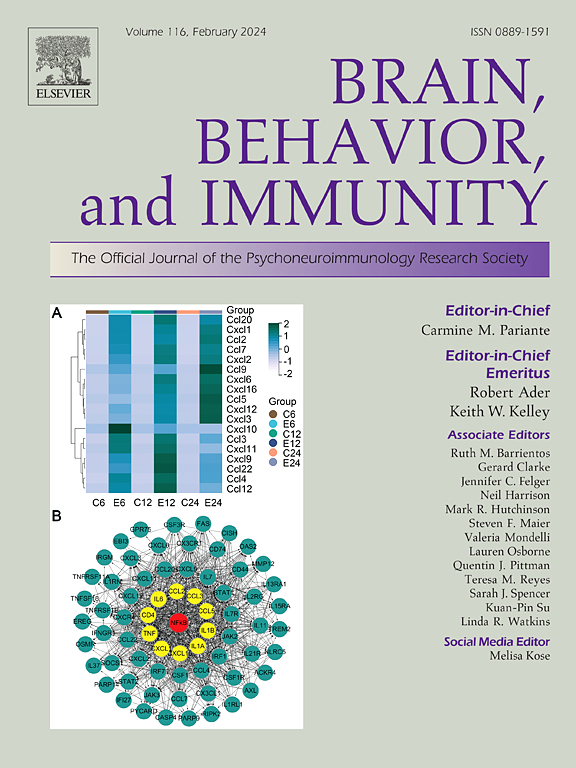Neonatal inflammation impairs developmentally-associated microglia and promotes a highly reactive microglial subset
IF 8.8
2区 医学
Q1 IMMUNOLOGY
引用次数: 0
Abstract
Microglia and border-associated macrophages play critical roles in both immunity and neurodevelopment. The disruption of microglial development trajectories by neonatal inflammation is an important issue in research on neurodevelopmental disorders (NDDs), as models have suggested a strong association between inflammation and cognitive deficits. Here, we explored by single-cell RNA sequencing and flow cytometry the impact of neonatal inflammation in a mouse NDD model on brain myeloid cell subsets. A specific subset of microglia expressing the complement receptor C5ar1 has been identified, in which inflammatory pathways are most strongly activated. Based on transcriptional similarity, this subset appears to originate from the most mature and “homeostatic“ microglia at this stage of development and demonstrated hypersensitivity to inflammation. Besides that, Spp1-microglia supporting oligodendrocyte differentiation, primitive and proliferative microglia were reduced by inflammation. These findings suggest major changes in microglial subsets developmental trajectories and reactivity contributing to NDDs induced by neonatal inflammation.
新生儿炎症损害了与发育相关的小胶质细胞,并促进了高反应性小胶质细胞亚群的形成。
小胶质细胞和边界相关巨噬细胞在免疫和神经发育中发挥着关键作用。新生儿炎症对小胶质细胞发育轨迹的破坏是神经发育障碍(NDDs)研究中的一个重要问题,因为模型表明炎症与认知障碍之间存在密切联系。在这里,我们通过单细胞 RNA 测序和流式细胞术探讨了小鼠 NDD 模型中新生儿炎症对大脑髓系细胞亚群的影响。我们发现了表达补体受体 C5ar1 的特定小胶质细胞亚群,在这些亚群中,炎症通路被最强烈地激活。根据转录的相似性,该亚群似乎源自发育阶段最成熟、最 "稳态 "的小胶质细胞,并表现出对炎症的超敏性。此外,支持少突胶质细胞分化的 Spp1-小胶质细胞、原始和增殖性小胶质细胞也因炎症而减少。这些发现表明,小胶质细胞亚群的发育轨迹和反应性发生了重大变化,导致新生儿炎症诱发 NDDs。
本文章由计算机程序翻译,如有差异,请以英文原文为准。
求助全文
约1分钟内获得全文
求助全文
来源期刊
CiteScore
29.60
自引率
2.00%
发文量
290
审稿时长
28 days
期刊介绍:
Established in 1987, Brain, Behavior, and Immunity proudly serves as the official journal of the Psychoneuroimmunology Research Society (PNIRS). This pioneering journal is dedicated to publishing peer-reviewed basic, experimental, and clinical studies that explore the intricate interactions among behavioral, neural, endocrine, and immune systems in both humans and animals.
As an international and interdisciplinary platform, Brain, Behavior, and Immunity focuses on original research spanning neuroscience, immunology, integrative physiology, behavioral biology, psychiatry, psychology, and clinical medicine. The journal is inclusive of research conducted at various levels, including molecular, cellular, social, and whole organism perspectives. With a commitment to efficiency, the journal facilitates online submission and review, ensuring timely publication of experimental results. Manuscripts typically undergo peer review and are returned to authors within 30 days of submission. It's worth noting that Brain, Behavior, and Immunity, published eight times a year, does not impose submission fees or page charges, fostering an open and accessible platform for scientific discourse.

 求助内容:
求助内容: 应助结果提醒方式:
应助结果提醒方式:


